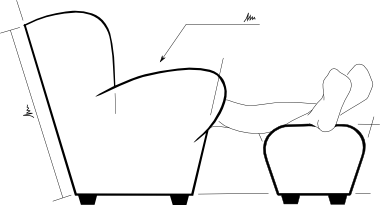A003_R002 Seat Design
The seat structure seems to have taken the most time of all the assemblies to re-design, though it was interrupted by some thesis redrafts. It’s perhaps a measure of the amount of how much work was needed on the previous revision (A003_R001).
[gallery link=”file” columns=”2” include=”2496,2481,2482,2487”]
One crucial task in the redesign was changing the cross beams from aluminium bars that needed manual machining to laser cut parts that can be produced automatically along with most of the other parts in the chassis. Having parts that can be created and finished in a single manufacturing step helps keep the manufacturing costs down.
Not using bars means the beam also doesn’t have to be the same size all along it’s length, the ends can flare out to better resist the bending moments generated when the seat is used.
Where the previous Cross Beam (A003_P003_R001) was a threaded bar that bolted to the Seat Side (A003_P001_R001), it has now been replaced by a two-part laser cut beam (A003_P003_R002 & A003_P004_R001) where the Cross Beam slots into the Seat Side. To prevent movement of the cross beam structure once it is in place, a “biscuit” insert (A003_P005_R001) is glued to the beam, through the Seat Side.
[gallery link=”file” columns=”2” include=”2488,2484,2485,2486”]
Also important is the hinge area. The Seat Side (A003_P001_R002) and the Hinge Plate (A003_P002_R002) rotate compared to each other around the pivot, so the Seat Side is radiused about that point. This means that, as the seat moves, there is no change in the position where the edges of each part meet. If this wasn’t the case, the movement of the two plates would make a scissoring action; but centering the arc of the Seat Side with the pivot will mean there are no pinch points.
[gallery link=”file” columns=”1” include=”2483”]
These parts are still subject to some revisions to connect them properly to the rest of the chassis.
